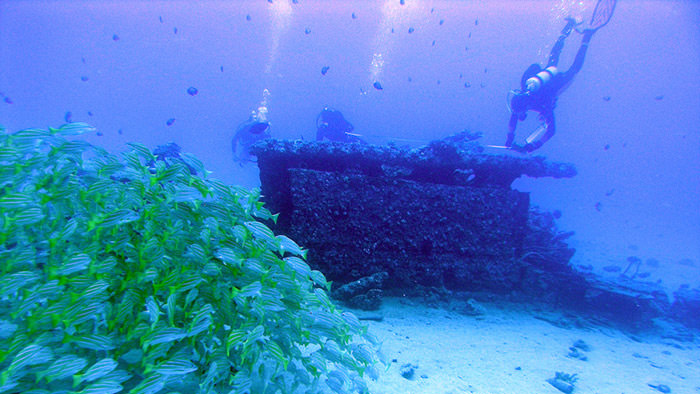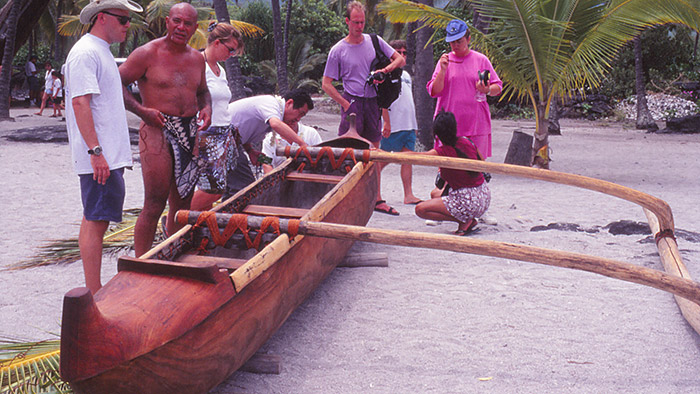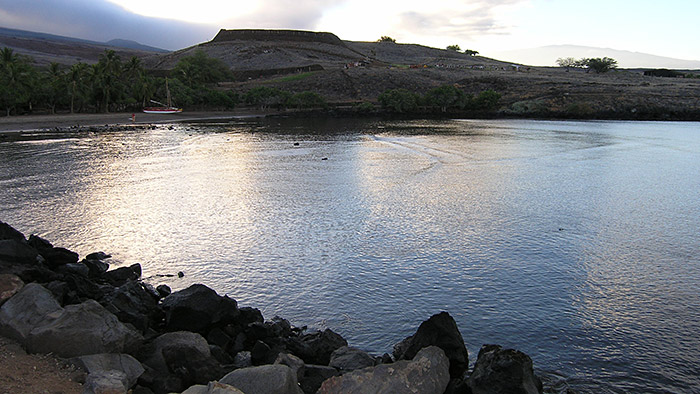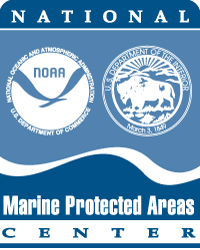Integrating Cultural Resources into MPA Management
A Resource by the Marine Protected Areas Federal Advisory Committee (These statements do not necessarily reflect the positions of NOAA or the U.S. Government)

At the most basic level, cultural heritage resources within MPAs consist of those tangible and intangible resources that connect us to the environment. Shipwrecks are a primary example of these heritage resources, for vessels of many shapes and sizes are the ubiquitous platform for human experience on the water. The interpretation of wreck sites reveals much about the activities of past seafarers, their ports of call, their cargos, and the nautical technology of the vessel itself. But consider the seascape of the sailor; it's more than just the ship. Anchorages, wharves, navigational aids, lighthouses, channels, harbors and port facilities all capture elements of the past, the remains of which can often be found underwater. And consider the more direct relationship of mariners from the longer pre-industrial age. Canoe construction areas, bays and landings, navigation landmarks, traditional fishing and gathering locations, and the customary knowledge of these places are all intangible elements which preserve the same cultural heritage, even though that knowledge is not focused on a physical property per se. All of these tangible and intangible assets or resources are elements of the maritime cultural landscape. When perceived and understood, they can speak of important past and present human activities, and connections to the marine environment that maintain our cultural identity and life-ways.
Opportunities and Obligations

Maintaining healthy coastal and marine ecosystems requires a fundamental understanding of the relationships between people and the environment. Adopting a cultural landscape approach can help managers achieve this understanding, as well as engaging new audiences in support of marine conservation goals. A cultural landscape is a place where the intersection of culture and nature leaves a distinct ecological or cultural imprint. A cultural landscape approach is an analytical framework for understanding the ways in which specific cultural and environmental processes overlap and influence one another. In many ways, a cultural landscape approach is analogous to ecosystem-based management – it is a holistic way of looking at places, people and how they form and change one another.
Many protected area managers lack training and knowledge of cultural resource management. As a result, these resources are sometimes either neglected or are managed by cultural resource experts separately from other MPA resources. Moreover, traditional approaches to the management of cultural resources, such as shipwrecks and archeological sites, typically studied and managed these sites individually. A cultural landscape approach can help identify ecological and cultural connections among different sites, resources and protected areas over time.
Methods and Approaches
This section will help you understand how to identify cultural resources within your MPA, and how to integrate these resources into your MPA management plan. Managers do not have to "reinvent the wheel" in order to protect important cultural heritage resources, for more sites every year are gaining experience in cultural resource management. Here are seven basic steps in initiating cultural resource management in your MPA.
1. Develop the important cultural landscape contexts for your MPA, being sure to include the human and ecological history of your site.
The Cultural Landscape Approach provides the necessary contextual background to fully understand the local cultural setting and be able to identify important heritage resources at your site. Cultural Landscapes are the intersection of both human activities and environment, so information from both the natural/ecological and cultural/historical perspectives must be included. For further guidance see: A Cultural Landscape Approach
2. Identify the principal types of cultural resources likely to be in your MPA.
What types of cultural resources exist in my site? Every site possesses a variety of tangible and intangible cultural resources, important touchstones and waypoints connected to human history, which are of significance to multiple groups. See "What are Cultural Resources?" for a list of examples of types of cultural resources.
3. Identify contemporary stakeholders and constituents with important heritage connections to associated CHR within your MPA.
Cultural resource management is not just about the site or artifact itself, but focuses instead on the human cultural connections that exist in, or are expressed through, your MPA. Creating a positive working relationship with those individuals and groups who have inherent cultural connections to your MPA may be the single most important step a successful site manager can take. For further guidance see: Engagement Outreach & Interpretation
4. Identify local tribes and indigenous peoples with connections to your MPA.
In general, many tribal and indigenous people have been intensely engaged with marine cultural resources for many generations, and may already benefit from established traditional forms of resource management. For further guidance see: Tribal and Indigenous Communities
5. Identify the primary statutory responsibilities for cultural resource management and protection within your MPA.
As a manager, you are responsible for understanding and implementing federal and state heritage preservation mandates and other laws that address cultural resources. Furthermore, state and federal agencies have specific obligations to many indigenous and tribal groups. For further guidance see: Legal Authorities
6. Identify available in-house or collaborative capacity for cultural resource management and recognition.
Most MPA managers face capacity and budget constraints and so are often "moving towards" rather than "completing" conservation and preservation goals. It is important to seek partners and shared capacity in this specialized field of maritime cultural resource management. Several excellent programs and organizations can provide specific training and assistance. Local educational institutions and societies likely have contextual information. Seeking local researchers and others in this exciting field is a great way to engage the public in your MPA.
7. Incorporate cultural heritage resource management and preservation into your MPA management plan.
With the proper background information, identification of resources, capacity and collaborating partnerships, and an understanding of your MPA's legal responsibilities, you are now in the position to make cultural resource management and preservation a valued part of your formal site management plan. Like any other site resource, this will entail understanding the potential benefits of public outreach and education, the fundamentals of data collection and monitoring and evaluation, handling of potentially sensitive information, and the potential (or real) threats to the resource, such as human impacts and environmental forces. While specific cultural resource strategies and activities may be consolidated in an individual chapter or sub-plan, the cultural landscape approach highlights the fact that cultural influences are part of every management decision for MPAs.

 Marine Protected Areas
Marine Protected Areas